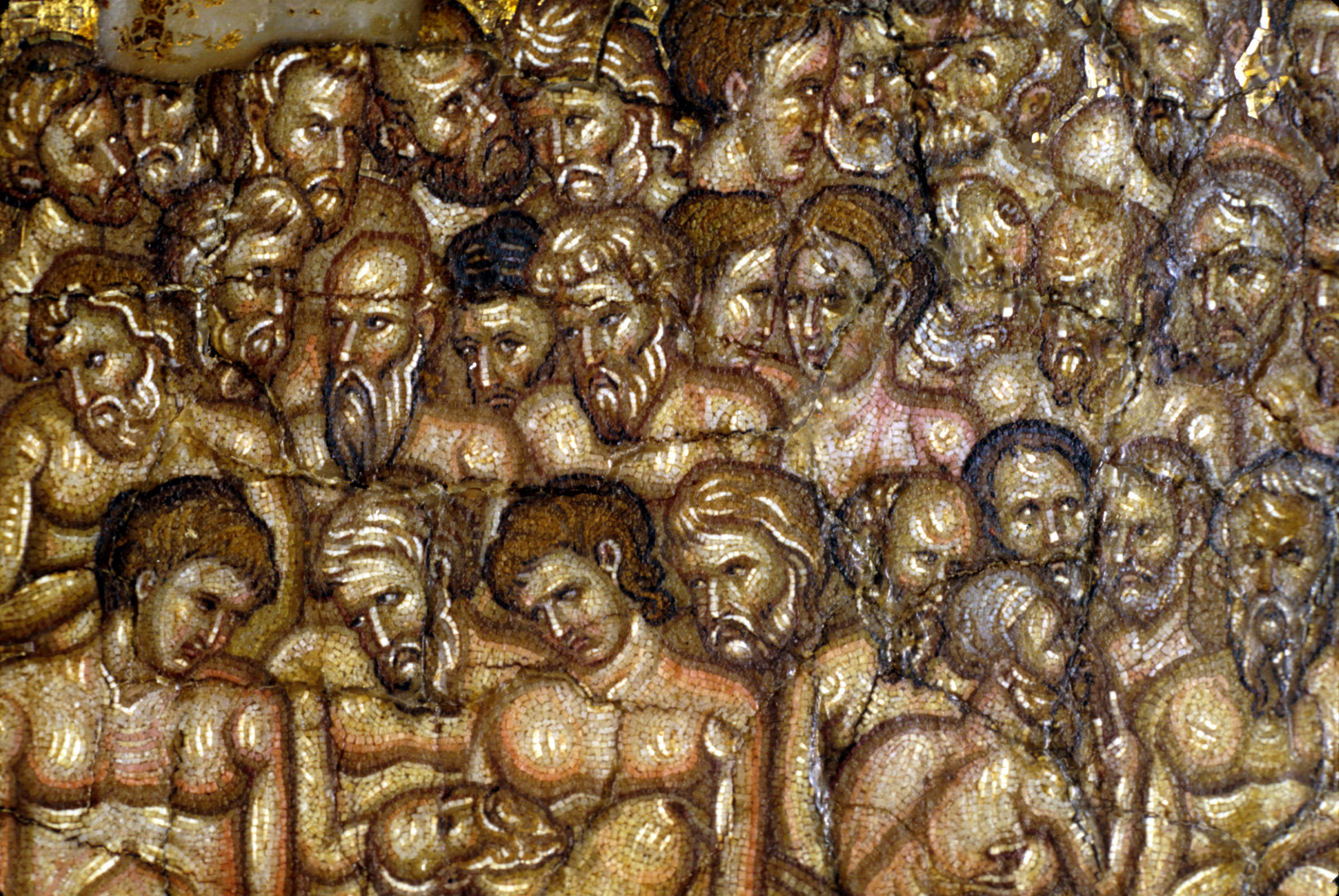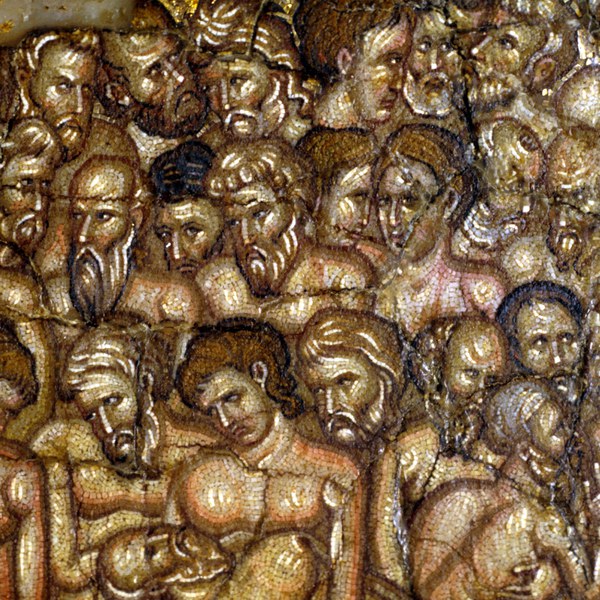Across premodern cultures, the mosaic artform enjoyed tremendous prestige. In the medieval Mediterranean, no other pictorial medium could rival mosaic’s opulence and visual splendor or claim to entail the same level of technical expertise. Durable and infinitely repairable, mosaics intimated a sense of both history and timelessness. Similarly, in the ancient Americas, the mosaic medium embodied status, wealth, and authority. A range of socially and ritually significant objects, from weapons and jewelry to figurines, were adorned with exquisitely crafted mosaic inlays, featuring such rich materials as turquoise, lapis lazuli, serpentine, and mother-of-pearl. Tellingly, both Byzantine micromosaic icons and ancient American portable mosaic objects would become objects of desire for antiquarians and collectors in early modern Europe. To these later audiences, mosaic epitomized cultures that were, from the European vantage point, geographically and temporally “far away.”
The Dumbarton Oaks Museum has unique holdings of artworks in the mosaic medium, including two Byzantine micromosaic icons (BZ.1947.24 and BZ.1954.2), a Wari mosaic mirror (PC.B.432) and figurine (PC.B.437), and a Maya mosaic mask (PC.B.557). The collection therefore presents a rare resource for reexamining mosaic artifacts from a cross-cultural perspective and exploring new ways of thinking more expansively about the mosaic medium and its histories, both local and global. In addition to this cross-cultural frame, this workshop and colloquium will serve as an opportunity to devote specific attention to Byzantine micromosaic icons, exceptionally rare (only thirty-six are known to survive today), and yet understudied, outstanding works of medieval art. The occasion of this workshop and colloquium offers us a far-reaching opportunity to return to the proverbial square one and reassess everything we think we know about Byzantine micromosaic icons: when they were created, where, how, by whom, for whom, and why.
Event details
The museum colloquium is open to the public. Presentations will take place on Thursday morning (9:00 a.m.–1:00 p.m.) and Friday morning (9:00 a.m.–1:00 p.m.). Papers in these sessions will discuss ancient Mediterranean floor mosaics, Mesoamerican inlaid artifacts, the history of collecting Byzantine and Pre-columbian mosaics in the early modern period, and case studies of current conservation and scientific research on Byzantine micromosaic icons.
Museum object study sessions on Thursday and Friday afternoons are limited to working group members and presenters. Museum colloquium attendees may however attend a virtual presentation of Thursday afternoon conservation reports. .
Organizers
- Ivan Drpić, Associate Professor of History of Art, University of Pennsylvania
- John Lansdowne, Post-Doctoral Fellow and Assistant to the Director, Villa I Tatti
- Elizabeth Dospěl Williams, Curator, Byzantine Collection, Dumbarton Oaks
Colloquium Speakers
- Stephanie Caruso, Giorgi Family Foundation Curatorial Fellow at Art Institute of Chicago
- Manuela De Giorgi, Professore II Fascia (Associato), Università del Salento
- Davide Domenici, Associate Professor of Anthropology, Università di Bologna
- Liz James, Professor of History of Art (Art History) University of Sussex
- Juan Carlos Melendez, Post-Doc, Archéologie des Amériques, Université de Paris 1, Panthéon-Sorbonne
- Silvia Pedone, Adjunct Professor of Byzantine Art, Università degli Studi della Tuscia, Viterbo
- Jennifer Stager, Assistant Professor, Johns Hopkins University
- Maria Yakovleva, Deputy Head of the Department of Scientific Research and Cataloguing, The Central Andrey Rublev Museum of Ancient Russian Culture and Art, Moscow
Study Session Speakers
- Stefania Chlouveraki, Conservator and Assistant Professor, University of West Attica
- Stephanie Guidera, Andrew W. Mellon Fellow in Objects Conservation · National Museum of the American Indian
- Emily Kaplan, Conservator, Smithsonian National Museum of the American Indian
- Thomas Lam, Physical Scientist, Smithsonian Museum Conservation Institute (MCI)
- Dimitrios C. Makris, Conservator and Associate Professor, University of West Attica
- Edward Vicenzi, Research Scientist, Smithsonian Museum Conservation Institute (MCI)
- Keats Webb, Digital Imaging Specialist, Smithsonian Museum Conservation Institute (MCI)
Workshop Participants
- Michele Bacci, Professor of Medieval Art History, Université de Fribourg
- Susan Bergh, Curator (retired), Arts of the Indigenous Americas, Cleveland Museum of Art
- Laura Filloy Nadal, Associate Curator, Ancient American Art, The Metropolitan Museum of Art
- Nicholas Herman, Lawrence J. Schoenberg Curator at the Schoenberg Institute for Manuscript Studies and Medieval Studies Librarian, Penn Libraries
- Juan Antonio Murro, Chief Curator and Curator of Pre-Columbian Art, Dumbarton Oaks
- Robert Nelson, Professor Emeritus, Yale University

